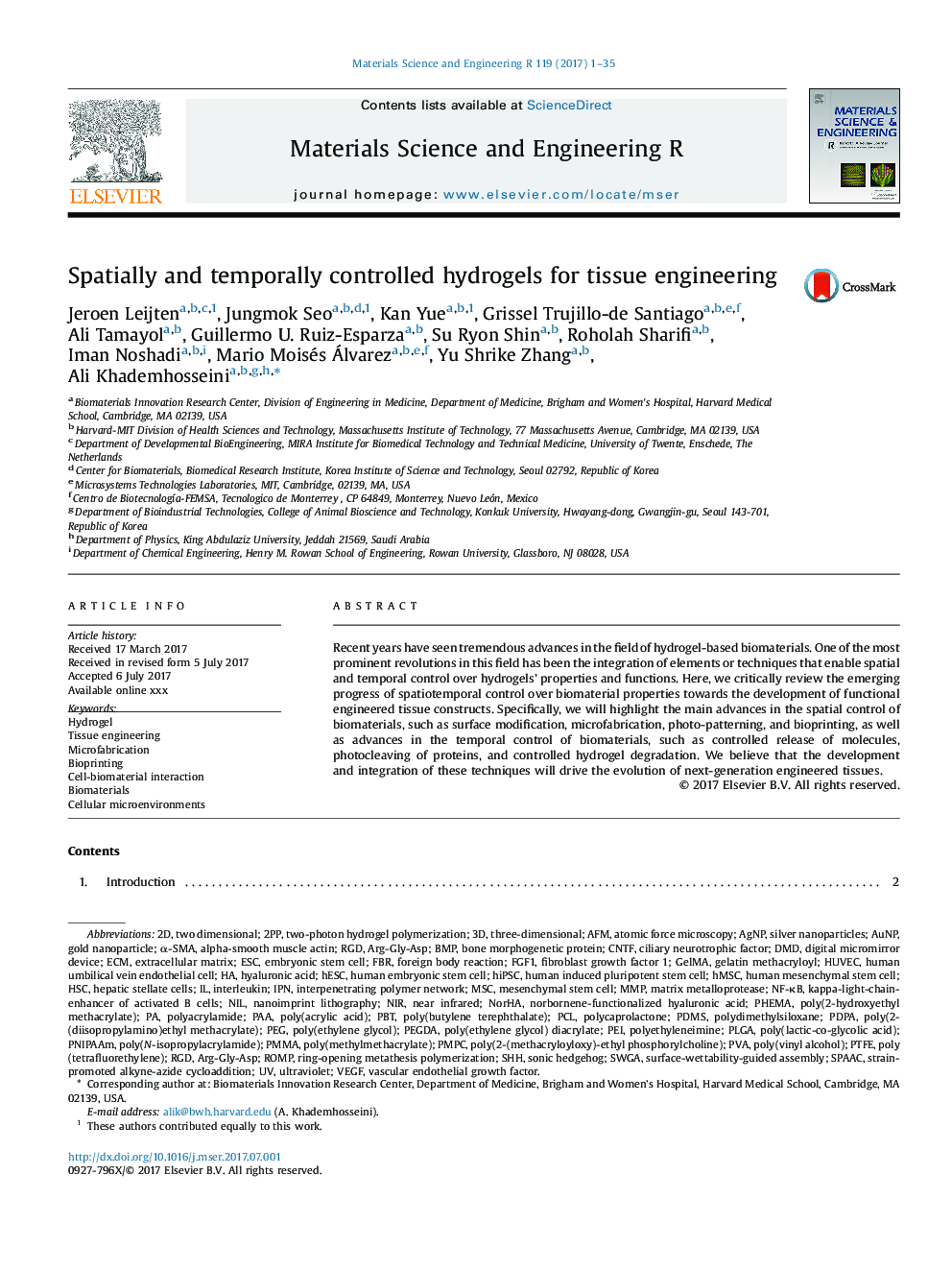| Article ID | Journal | Published Year | Pages | File Type |
|---|---|---|---|---|
| 5448883 | Materials Science and Engineering: R: Reports | 2017 | 35 Pages |
Abstract
Recent years have seen tremendous advances in the field of hydrogel-based biomaterials. One of the most prominent revolutions in this field has been the integration of elements or techniques that enable spatial and temporal control over hydrogels' properties and functions. Here, we critically review the emerging progress of spatiotemporal control over biomaterial properties towards the development of functional engineered tissue constructs. Specifically, we will highlight the main advances in the spatial control of biomaterials, such as surface modification, microfabrication, photo-patterning, and bioprinting, as well as advances in the temporal control of biomaterials, such as controlled release of molecules, photocleaving of proteins, and controlled hydrogel degradation. We believe that the development and integration of these techniques will drive the evolution of next-generation engineered tissues.
Keywords
AgNPNIRFBRPAAAuNPPEIRGDCNTFMSCHUVECPBThMSCDMDIPNGelMAhiPSCpHEMAsWGAArg-Gly-AspNILPNIPAAmROMPFGF1PMPCSPAAC2PPgelatin methacryloylThree-dimensionalECMAFMPVAPLGANF-κBα-SMAHSCMMPPCLPTFEPDMSPolyacrylamidehESCAlpha-smooth muscle actinHyaluronic acidUltravioletinterleukinBiomaterialsPDPAESCShhDigital micromirror devicetwo dimensionalMicrofabricationHuman umbilical vein endothelial cellHuman embryonic stem cellHuman induced pluripotent stem cellEmbryonic stem cellMesenchymal stem cellhuman mesenchymal stem cellHepatic stellate cellsInterpenetrating polymer networksonic hedgehogFibroblast growth factor 1Vascular endothelial growth factorVascular Endothelial Growth Factor (VEGF)ciliary neurotrophic factorNanoimprint lithographyExtracellular matrixMatrix metalloproteaseNear infraredBMPTissue engineeringatomic force microscopyGold nanoparticleSilver nanoparticlesBioprintingHydrogelForeign body reactionBone morphogenetic proteinpoly(2-hydroxyethyl methacrylate)Poly(N-isopropylacrylamide)poly(lactic-co-glycolic acid)Poly(butylene terephthalate)Poly(methylmethacrylate)PMMAPoly(ethylene glycol)Poly(ethylene glycol) diacrylatepolyethyleneiminepoly(acrylic acid)Poly(vinyl alcohol)PolycaprolactoneRing-opening metathesis polymerizationPEGPolydimethylsiloxanePEGDA
Related Topics
Physical Sciences and Engineering
Materials Science
Electronic, Optical and Magnetic Materials
Authors
Jeroen Leijten, Jungmok Seo, Kan Yue, Grissel Trujillo-de Santiago, Ali Tamayol, Guillermo U. Ruiz-Esparza, Su Ryon Shin, Roholah Sharifi, Iman Noshadi, Mario Moisés Álvarez, Yu Shrike Zhang, Ali Khademhosseini,
